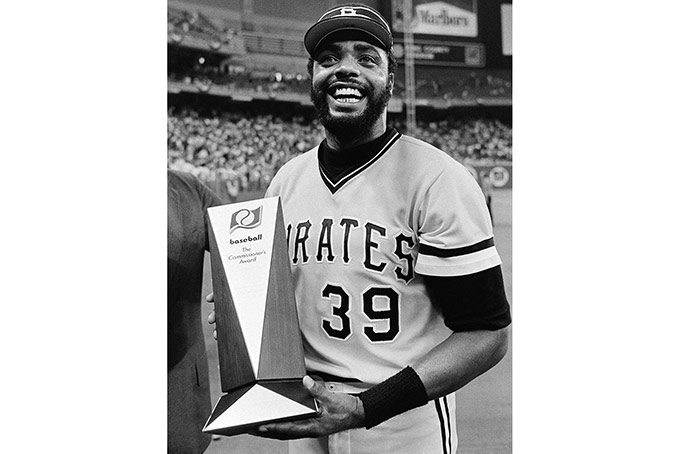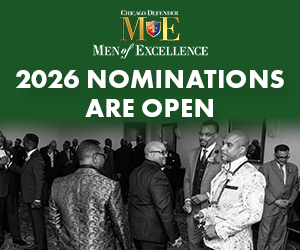Recently, Jay Berry posted an article on mikefarrellsports.com titled: “Deion Sanders Says Honor Legends Now, Not After They’re Gone.”
Mr. Berry posted the following: “Regarding awards and tributes, Colorado head coach Deion Sanders doesn’t believe in waiting. After Colorado’s spring game, Sanders said, ‘So we gotta die to get recognized? Give people their flowers while they can enjoy them, and they can smell them.’ These are the latest comments surrounding the backlash to retiring Shedeur Sanders’ and Travis Hunter’s Colorado jersey numbers. After the spring game, Sanders mentioned two Colorado legends who passed away before being honored.”
Check this out. Retiring the numbers of Sanders and Hunter may appear to be a bit premature, but I would rather coaches, players or other participants be honored a bit too early rather than far too late. Let’s review the process and the outcome of how athletes of color have been honored in comparison to White athletes over the past century.

The great Dallas Cowboys quarterback Roger Staubach won a Heisman Trophy and two Super Bowls before he retired in 1980. He was a first-ballot inductee into the NFL Hall of Fame in 1985, just five years after he retired.
Let’s hit rewind and take a look at the career of the groundbreaking career of the late, great Fritz Pollard. He was one of the initial Black players in the NFL and was the first to become a head coach. A First-Team All-Pro member in 1920, Pollard was one of the most feared running backs in the early years of the NFL, which was then known as the American Professional Football Association.
Although the NFL Hall of Fame opened in 1963, Pollard was not inducted into the Hall of Fame until 2005—nearly 20 years after his death. The NFL HOF acceptance speech for Fritz Pollard had to be delivered by Fritz Pollard III.
It would have been great for Fritz to tell his own story. Fritz was not able to ride the coattails of his “gold jacket” onto the airwaves of the radios and televisions of the world, hawking fast foods, automobiles or any other products.
“Bullet” Bob Hayes was another legendary player whose welcome to the “hall of shame” was unjustifiably delayed. Hayes is regarded as one of the greatest receivers ever to play the game. He played for 10 seasons with the Dallas Cowboys and one season with the San Francisco 49ers. His speed could make defensive backs appear as if they were standing still and playing with blinders on. Bob Hayes retired in 1976. Just two years later in 1978, the “Mel Blount” defensive coverage rule was enacted, prohibiting contact with an offensive player more than five yards beyond the line of scrimmage. If he had performed with such an advantage, Hayes could have possibly scored more than 50-plus touchdowns per season!
Hayes is the only athlete to win a Super Bowl as well as an Olympic gold medal. He retired in 1976. He died in 2001. He was posthumously selected to the Pro Football Hall of Fame in 2009. There were numerous opportunities during the 15 years after he retired to induct him into the “great hall,” but they did not see fit to do so until approximately 8 years after his death. But as “Prime” stated so eloquently, “so we gotta die to get recognized? Give people their flowers while they can enjoy them, and they can smell them.” Forget, “let them eat cake.” The catchphrase should be: “Let them smell formaldehyde.”
Compare the career of Lance Alworth to the career of Bob Hayes. Alworth played 11 seasons and retired from the NFL in 1972 and was quickly inducted into the NFL Hall of Fame in 1978, only six short years after he retired. The excuse for bypassing Bob Hayes was that Lance Alworth had grace and agility and Bob Hayes was just pure speed. If Lance Alworth was “Bambi” then who the hell was Bob Hayes, “Rudolph the Red-nosed Reindeer?”
Lance Alworth was able to deliver his HOF speech in the prime of his life, surrounded by his former teammates, friends and loved ones. For any of us to hear Bob Hayes convey his NFL HOF acceptance speech posthumously, we are forced to employ the services of a certified USDA bone-seeking clairvoyant or we have to mosey on over to the nearest mystic shop and purchase the latest edition of a Ouija Board as well as a fifth of Grand Marnier to sip on while we patiently sit in a candlelit room, waiting to establish contact with the spirit world.
On June 28, Bob Nightengale posted an article about former Pittsburgh Pirates great Dave Parker on usatoday.com titled: “The Cobra’ Dave Parker prayed to live one more month. MLB legend’s legacy lives on.” Nightengale writes: “Dave Parker, his mind still sharp but his body failing, kept pleading. One more month, he prayed. Please, let him be healthy enough to get to Cooperstown, New York, to be inducted July 27 into Baseball’s Hall of Fame. If not, at least keep him alive so he could hear his son present his speech. He fought so courageously since hearing the news in December that he was elected to the Hall of Fame.”
Parker was forced to pray to receive the recognition that he earned and deserved. The illness of Parker was well-known for several years. As mortality became his mirror, Dave Parker prayed the same prayer of protection that he prayed when they hurled objects at him during the 1970s, when he took his place in the right fields of a few MLB ballparks, including his home field, Three Rivers Stadium.
He should have been elected to the MLB Hall of Fame years earlier. However, Parker is just another Black athlete who fell under the “posthumous recognition” rule. Folks were busy playing God with the process, while Dave Parker was busy praying.




